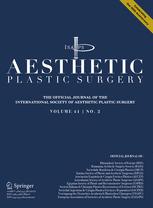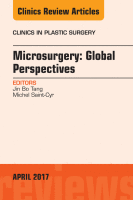Marchesi, A. et als.
Aesthetic Plastic Surgery, April 2017, Volume 41, Issue 2, pp 352–358
 Necrotizing fasciitis (NF) is a rare, potentially fatal, infective complication that can occur after surgery. Diagnosis is still difficult and mainly based on clinical data. Only a prompt pharmacological and surgical therapy can avoid dramatic consequences. There are few reports regarding NF as a complication after aesthetic surgical procedures, and a systematic review still lacks.
Necrotizing fasciitis (NF) is a rare, potentially fatal, infective complication that can occur after surgery. Diagnosis is still difficult and mainly based on clinical data. Only a prompt pharmacological and surgical therapy can avoid dramatic consequences. There are few reports regarding NF as a complication after aesthetic surgical procedures, and a systematic review still lacks.
 Within a surgical department, communication is of the essence. Provided and adapted exchange between practitioners is the key to achieve premium patient care and optimize therapeutic strategies. With the use of smartphones, instant messaging applications face a growing popularity in both private and professional sectors, serving as a secure, efficient, and economical communication tool by optimizing transmission and data usage within teams.
Within a surgical department, communication is of the essence. Provided and adapted exchange between practitioners is the key to achieve premium patient care and optimize therapeutic strategies. With the use of smartphones, instant messaging applications face a growing popularity in both private and professional sectors, serving as a secure, efficient, and economical communication tool by optimizing transmission and data usage within teams. The Department of Orthopedics and Replantation Research Laboratory of the Sixth People’s Hospital of Shanghai was at the forefront of technical innovation and development of limb and digital replantation and early microsurgery in the mid-1960s, half a century ago. This was a period when the entirety of China was isolated from the rest of the world, with revolutionary movements spreading over the entire country. Almost unbelievably, the early development of microsurgery took place during this period, unknown to the rest of the world. As a member of the earliest research team in the replantation laboratory and a member of the surgical team in the department, the author recollects some little-known facts dating back half a century that led to now-familiar techniques in microsurgery.
The Department of Orthopedics and Replantation Research Laboratory of the Sixth People’s Hospital of Shanghai was at the forefront of technical innovation and development of limb and digital replantation and early microsurgery in the mid-1960s, half a century ago. This was a period when the entirety of China was isolated from the rest of the world, with revolutionary movements spreading over the entire country. Almost unbelievably, the early development of microsurgery took place during this period, unknown to the rest of the world. As a member of the earliest research team in the replantation laboratory and a member of the surgical team in the department, the author recollects some little-known facts dating back half a century that led to now-familiar techniques in microsurgery. Research sets the foundation for developing plastic surgeons who think critically and approach clinical practice with an inquisitive mind. The objective of this study was to characterize current attitudes and perceived barriers towards conducting research during residency.
Research sets the foundation for developing plastic surgeons who think critically and approach clinical practice with an inquisitive mind. The objective of this study was to characterize current attitudes and perceived barriers towards conducting research during residency. Psychoactive drug use is on the rise in the United States, with plastic surgery patients a potentially susceptible group. This study aimed to determine the incidence of cosmetic and reconstructive patients in our practice taking psychoactive drugs and to compare those values with the national average. Furthermore, we discuss the patient safety concerns when patients withhold their medical history information over the course of their treatment.
Psychoactive drug use is on the rise in the United States, with plastic surgery patients a potentially susceptible group. This study aimed to determine the incidence of cosmetic and reconstructive patients in our practice taking psychoactive drugs and to compare those values with the national average. Furthermore, we discuss the patient safety concerns when patients withhold their medical history information over the course of their treatment.




 Sitio web publicado el
Sitio web publicado el
Los lectores comentan